Abstract
Hypothyroidism is one of the major complications after thyroidectomy for thyrotoxicosis, but the factors responsible are not well defined. In an attempt to define these factors 278 patients operated on in 1965-9 were studied in detail. The overall incidence of hypothyroidism was 49%. The high incidence of hypothyroidism during 1965-6 led to a policy of leaving larger remnants in the later years of the study, and it became apparent that the most important aetiological factor in postoperative hypothyroidism was small remnant size. There seemed to be an association between the incidence of hypothyroidism and the presence of antithyroglobulin antibodies, but this association was not statistically significant. The data suggested that blood group O might be more common and blood group A less common in hypothyroid patients. The incidence of hypothyroidism seemed to be uninfluenced by the age or sex of the patient, the size of the gland, or the amount and duration of preoperative antithyroid drug therapy.
Though a reasonable prediction of the incidence of hypothyroidism can be made for a group of patients on the basis of remnant size, the fate of the individual can be predicted only within very wide limits. An indication of the future status of the individual patient at one year and subsequently does, however, seem possible from serum protein-bound iodine estimations at one and four months after operation. Hypothyroidism developing later than one year after operation has not been observed in this series. The ability to assess thyroid status early after surgery is of some merit in the long-term supervision of the postoperative thyrotoxic patient, and in this respect surgical treatment seems to have some advantage over radioiodine therapy.
Full text
PDF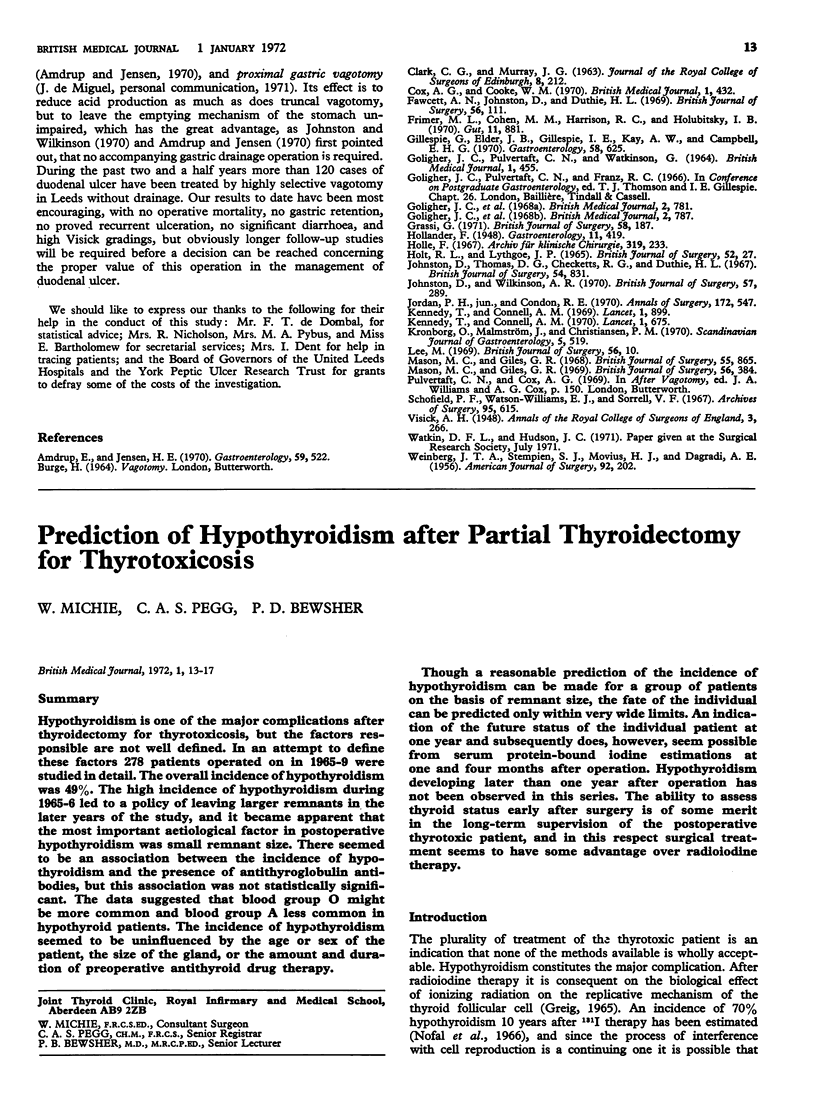
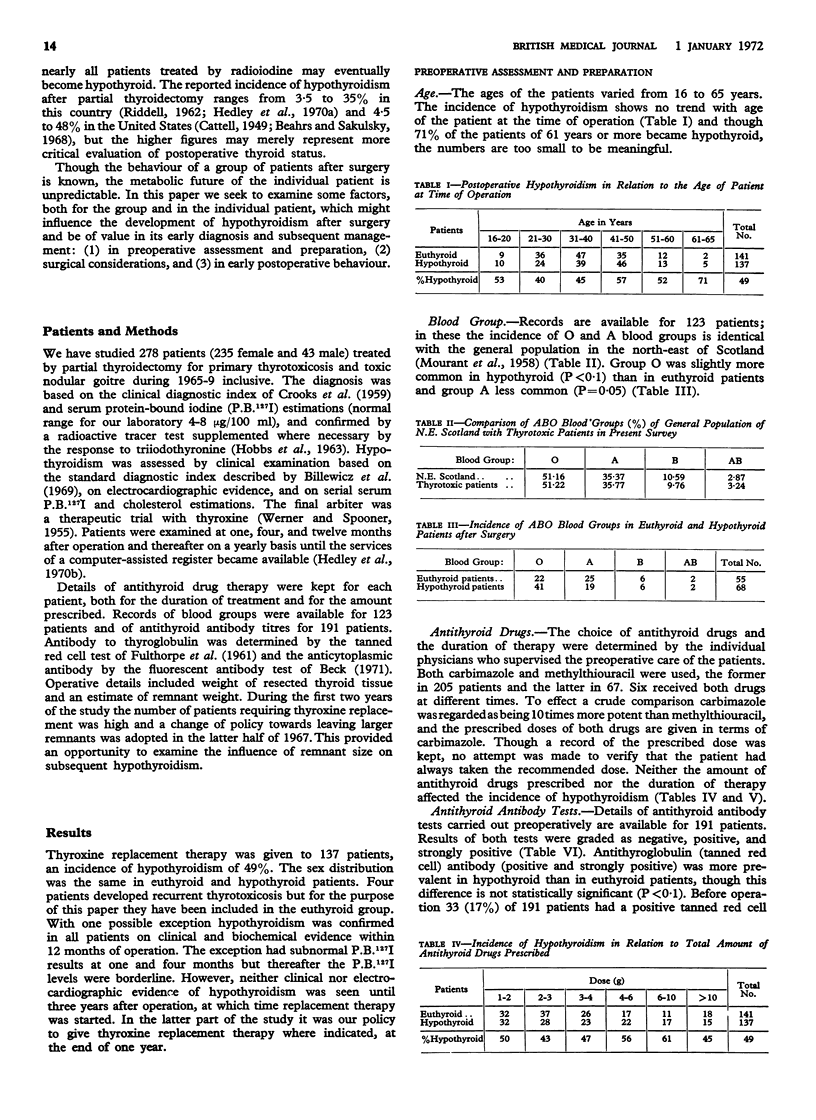
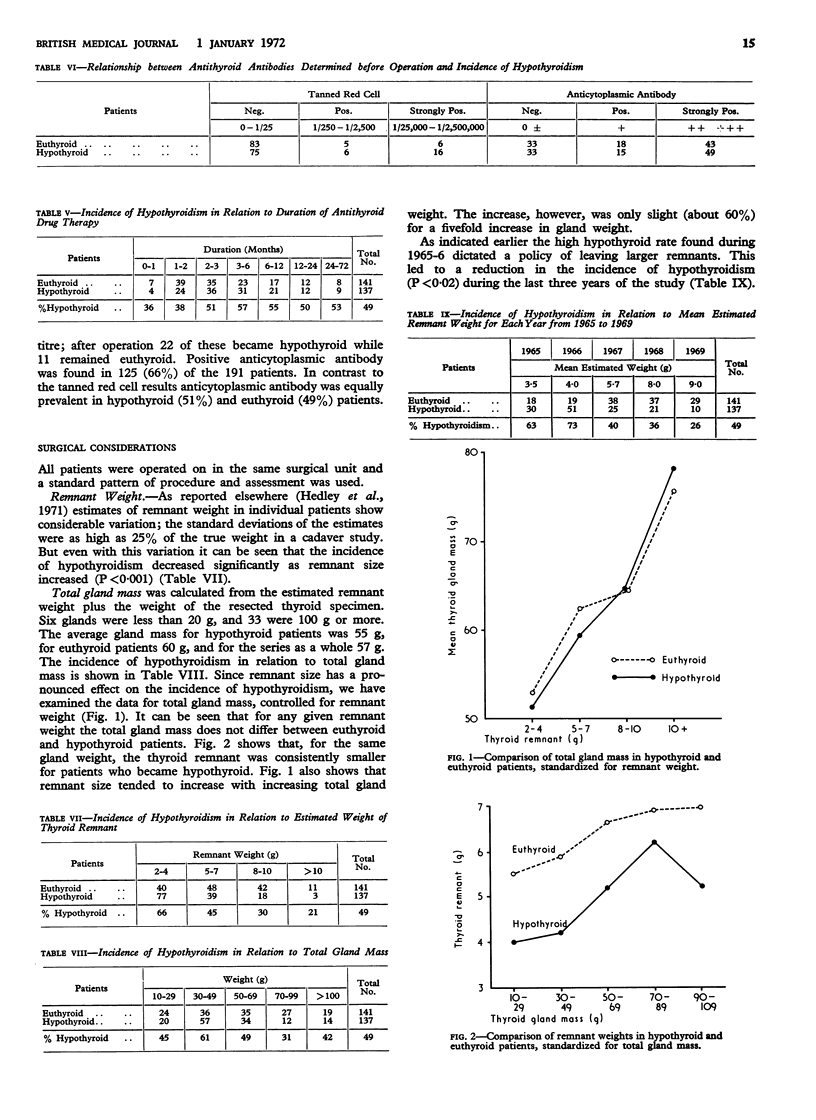
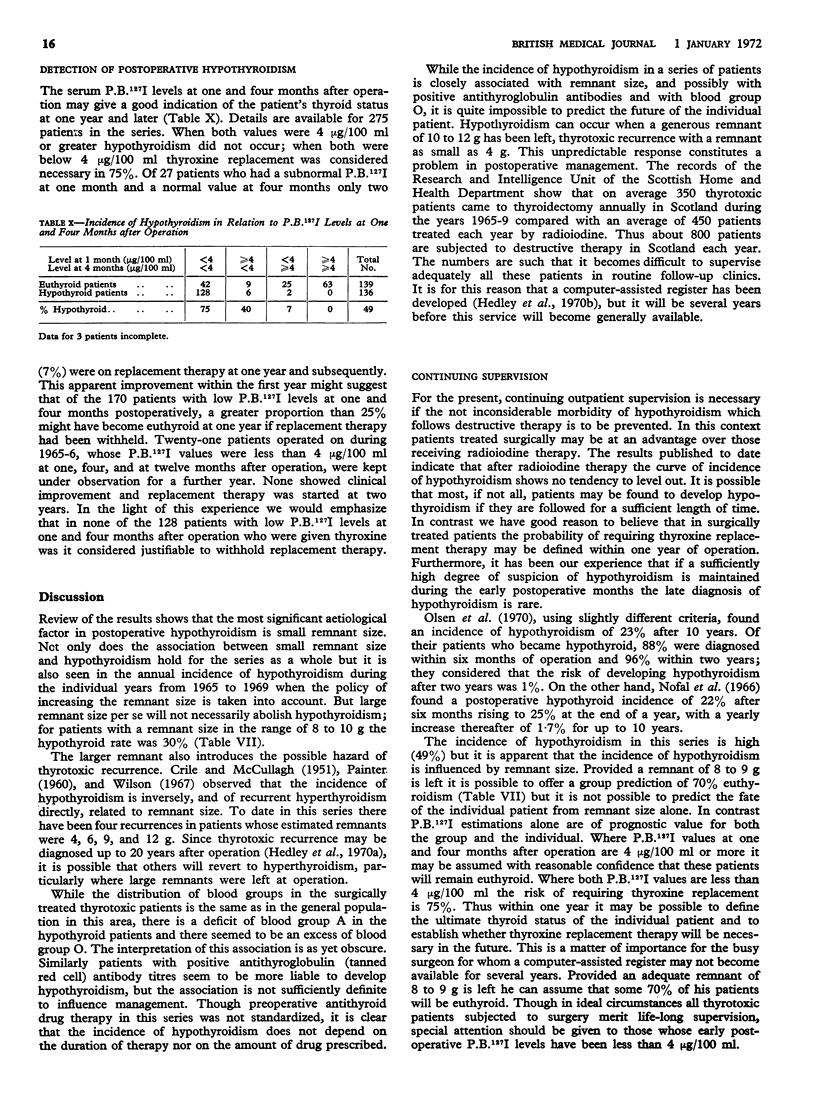
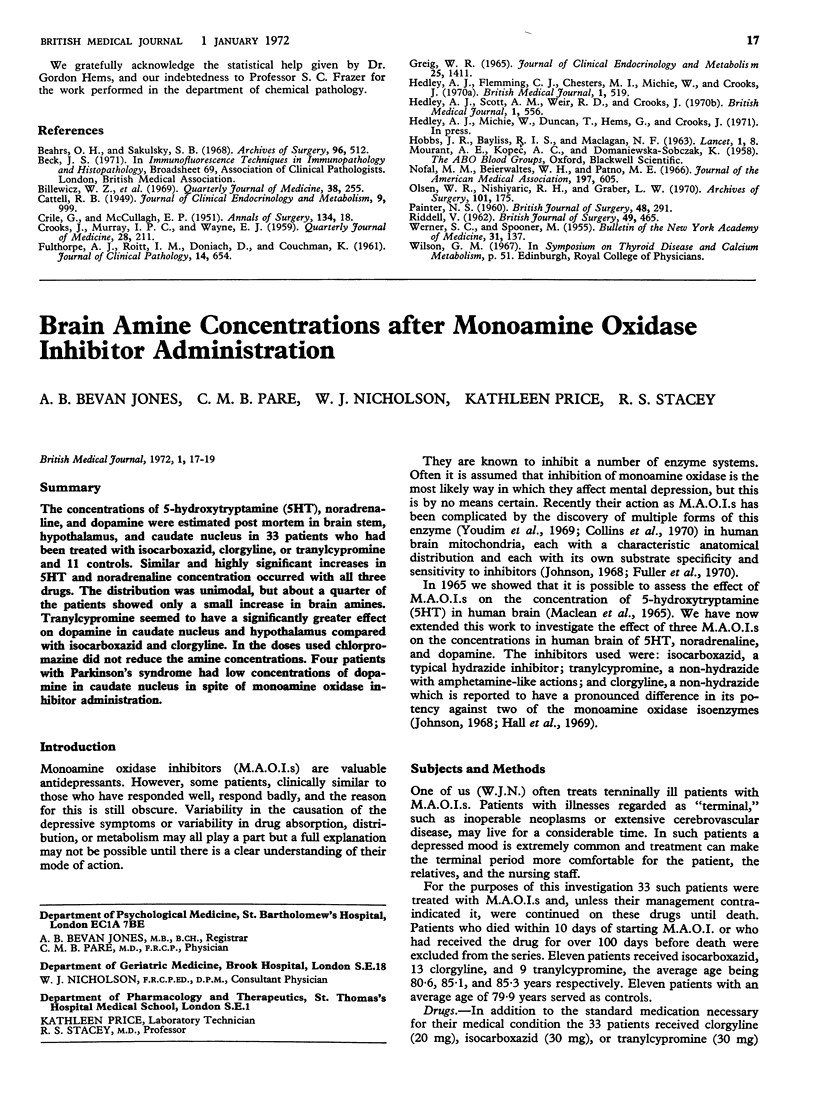
Selected References
These references are in PubMed. This may not be the complete list of references from this article.
- Beahrs O. H., Sakulsky S. B. Surgical thyroidectomy in the management of exophthalmic goiter. Arch Surg. 1968 Apr;96(4):512–516. doi: 10.1001/archsurg.1968.01330220028005. [DOI] [PubMed] [Google Scholar]
- Billewicz W. Z., Chapman R. S., Crooks J., Day M. E., Gossage J., Wayne E., Young J. A. Statistical methods applied to the diagnosis of hypothyroidism. Q J Med. 1969 Apr;38(150):255–266. [PubMed] [Google Scholar]
- CRILE G., Jr, McCULLAGH E. P. The treatment of hyperthyroidism; an evaluation of thyroidectomy, of prolonged administration of propyl thiouracil, and of radioactive iodine. Ann Surg. 1951 Jul;134(1):18–28. doi: 10.1097/00000658-195107000-00004. [DOI] [PMC free article] [PubMed] [Google Scholar]
- CROOKS J., MURRAY I. P., WAYNE E. J. Statistical methods applied to the clinical diagnosis of thyrotoxicosis. Q J Med. 1959 Apr;28(110):211–234. [PubMed] [Google Scholar]
- FULTHORPE A. J., ROITT I. M., DONIACH D., COUCHMAN K. A stable sheep cell preparation for detecing thyroglobulin auto-antibodies and its clinical applications. J Clin Pathol. 1961 Nov;14:654–660. doi: 10.1136/jcp.14.6.654. [DOI] [PMC free article] [PubMed] [Google Scholar]
- Greig W. R. Radiation, thyroid cells and 131-I therapy--a hypothesis. J Clin Endocrinol Metab. 1965 Oct;25(10):1411–1417. doi: 10.1210/jcem-25-10-1411. [DOI] [PubMed] [Google Scholar]
- HOBBS J. R., BAYLISS R. I., MACLAGAN N. F. The routine use of 132-I in the diagnosis of thyroid disease. Lancet. 1963 Jan 5;1(7271):8–13. doi: 10.1016/s0140-6736(63)91143-7. [DOI] [PubMed] [Google Scholar]
- Hedley A. J., Flemming C. J., Chesters M. I., Michie W., Crooks J. Surgical treatment of thyrotoxicosis. Br Med J. 1970 Feb 28;1(5695):519–523. doi: 10.1136/bmj.1.5695.519. [DOI] [PMC free article] [PubMed] [Google Scholar]
- Hedley A. J., Scott A. M., Weir R. D., Crooks J. Computer-assisted follow-up register for the north-east of Scotland. Br Med J. 1970 Feb 28;1(5695):556–558. doi: 10.1136/bmj.1.5695.556. [DOI] [PMC free article] [PubMed] [Google Scholar]
- Nofal M. M., Beierwaltes W. H., Patno M. E. Treatment of hyperthyroidism with sodium iodide I-131. JAMA. 1966 Aug 22;197(8):605–610. [PubMed] [Google Scholar]
- Olsen W. R., Nishiyama R. H., Graber L. W. Thyroidectomy for hyperthyroidism. Arch Surg. 1970 Aug;101(2):175–180. doi: 10.1001/archsurg.1970.01340260079013. [DOI] [PubMed] [Google Scholar]
- PAINTER N. S. The results of surgery in the treatment of toxic goitre. A review of 172 cases. Br J Surg. 1960 Nov;48:291–296. doi: 10.1002/bjs.18004820910. [DOI] [PubMed] [Google Scholar]
- RIDDELL V. Thyrotoxicosis and the surgeon. Br J Surg. 1962 Mar;49:465–496. doi: 10.1002/bjs.18004921702. [DOI] [PubMed] [Google Scholar]
- WERNER S. C., SPOONER M. A new and simple test for hyperthyroidism employing L-triiodothyronine and the twenty-four hour I-131 uptake method. Bull N Y Acad Med. 1955 Feb;31(2):137–145. [PMC free article] [PubMed] [Google Scholar]


